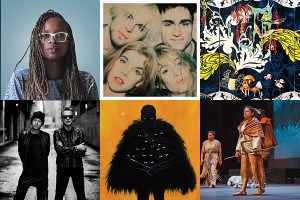Charting a New Course: The Best American Infographics 2013
The first infographics date back to at least the 1800s, when Florence Nightingale pioneered the use of pie charts to convince Queen Victoria to improve sanitary conditions in hospitals. But as a mode of storytelling, infographics have come into their own in our current age of data overload. The Best American Infographics 2013 seeks to curate the finest of the recent crop, from the hand-scrawled “Gayest (and Straightest) Super Bowl Halftime Shows” to a gorgeous wind map generated by Google data-visualization researchers Fernanda Viégas and Martin Wattenberg.
“We all have this feeling of being overwhelmed by info and data happening all around us,” says Gareth Cook, the former Globe reporter and Pulitzer Prize winner who edited the anthology (which includes a forward by David Byrne) for Houghton Mifflin Harcourt. Infographics, Cook argues, appeal to the human mind in a way that text alone cannot. “So much of our brains are devoted to visualizing things,” he says. “You can see these infographics as a way of speaking to this part of your brain.”
Gareth Cook reads from The Best American Infographics 2013, out this month, at Brookline Booksmith on 10/15 at 7 p.m.
An Infographic Concerning the Types of, Well, Infographics Found in The Best American Infographics 2013

Photograph by Lucas Zambroski
10%
HIERARCHIES
Flow charts, family trees, organizational charts.
10%
DIAGRAMS
Blueprints, anatomical illustrations, cutaways, schematics.
20%
CHRONOLOGY
Timelines, growth charts, sequential art, graphic narratives.
25%
MAPS
Weather maps, census maps, transit maps, cartograms.
10%
NETWORKS
Relationship webs and power grids—like hierarchies, but interconnected.
25%
STATISTICS
Pie charts, bar charts, line charts, bubble charts.


